Papers by Miki Ben-Dor
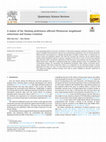
A matter of fat: Hunting preferences affected Pleistocene megafaunal extinctions and human evolution, 2024
The longstanding debate over human contribution to Pleistocene megafauna extinctions motivates ou... more The longstanding debate over human contribution to Pleistocene megafauna extinctions motivates our examination of plausible hunting behaviors that may have impacted prey populations. Prey size declines during the Pleistocene have been proposed as a unifying selecting agent of human evolution. Here, we identify prey selection criteria and exploitation patterns that could have increased the extinction risk for targeted species. Limited protein metabolism capacity in humans is proposed to have led to a focus on fat-rich prey, primarily large and prime adults, and selective exploitation of fatty body parts. Such behaviors may have made humanhunted species more vulnerable to population decline due to human predation alone or in combination with environmental changes. We contextualize this hypothesized mechanism within modern evolutionary theory, noting alignment with Niche Construction Theory as an explanation for the directional changes in human physiology and culture over time. The well-evidenced trend of brain expansion provides historical continuity with longer-term primate evolution, meeting recent calls for greater emphasis on ancestral connections in evolutionary models.
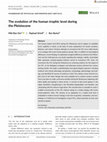
The human trophic level (HTL) during the Pleistocene and its degree of variability serve, explici... more The human trophic level (HTL) during the Pleistocene and its degree of variability serve, explicitly or tacitly, as the basis of many explanations for human evolution, behavior, and culture. Previous attempts to reconstruct the HTL have relied heavily on an analogy with recent hunter-gatherer groups' diets. In addition to technological differences, recent findings of substantial ecological differences between the Pleistocene and the Anthropocene cast doubt regarding that analogy's validity. Surprisingly little systematic evolution-guided evidence served to reconstruct HTL. Here, we reconstruct the HTL during the Pleistocene by reviewing evidence for the impact of the HTL on the biological, ecological, and behavioral systems derived from various existing studies. We adapt a paleobiological and paleoecological approach, including evidence from human physiology and genetics, archaeology, paleontology, and zoology, and identified 25 sources of evidence in total. The evidence shows that the trophic level of the Homo lineage that most probably led to modern humans evolved from a low base to a high, carnivorous position during the Pleistocene, beginning with Homo habilis and peaking in Homo erectus. A reversal of that trend appears in the Upper Paleolithic, strengthening in the Mesolithic/Epipaleolithic and Neolithic, and culminating with the advent of agriculture. We conclude that it is possible to reach a credible reconstruction of the HTL without relying on a simple analogy with recent hunter-gatherers' diets. The memory of an adaptation to a trophic level that is embedded in modern humans' biology in the form of genetics, metabolism, and morphology is a fruitful line of investigation of past HTLs, whose potential we have only started to explore.
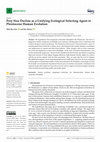
Quaternary, 2021
We hypothesize that megafauna extinctions throughout the Pleistocene, that led to a progressive d... more We hypothesize that megafauna extinctions throughout the Pleistocene, that led to a progressive decline in large prey availability, were a primary selecting agent in key evolutionary and cultural changes in human prehistory. The Pleistocene human past is characterized by a series of
transformations that include the evolution of new physiological traits and the adoption, assimilation, and replacement of cultural and behavioral patterns. Some changes, such as brain expansion,
use of fire, developments in stone-tool technologies, or the scale of resource intensification, were uncharacteristically progressive. We previously hypothesized that humans specialized in acquiring large prey because of their higher foraging efficiency, high biomass density, higher fat content, and the use of less complex tools for their acquisition. Here, we argue that the need to mitigate the additional energetic cost of acquiring progressively smaller prey may have been an ecological selecting agent in fundamental adaptive modes demonstrated in the Paleolithic archaeological record.
We describe several potential associations between prey size decline and specific evolutionary and cultural changes that might have been driven by the need to adapt to increased energetic demands while hunting and processing smaller and smaller game.
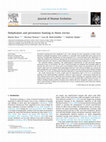
Journal of Evolution and Health, 2019
The Paleo Diet evolutionary mismatch principle suggests that the closer we stay to the diet that ... more The Paleo Diet evolutionary mismatch principle suggests that the closer we stay to the diet that we evolved to consume the better chances we have to stay healthy.
There is little doubt that meat was a significant component of the Paleolithic diet and that it was acquired largely by hunting [1] and thus Paleolithic humans can be defined as carnivores.
The definition of carnivory, however, is vague as a dietary pattern. There are 'carnivores' belonging to the Carnivora family that doesn't eat meat (Panda bears). There are 'obligate carnivores' that rely on very high protein consumption (cats). There are hypercarnivores that by definition consume more than 70% of the calories from animal sources and there are even 'epic carnivores' at the very top of the food
chain (lions).
The purpose of the present investigation is not to assign humans to any of these categories but to find out whether during our evolution we became adapted to consume large quantities of meat on account of a previous adaptation to consume large quantities of plants. If so, we can assume that a relatively large quantity of meat will be safer than consuming a relatively large quantity of plant foods.
Another question that comes up is to what level of protein consumption we became adapted. Since in diet, every item that we consume replaces an item that we could consume, if we are adapted to consume animal sourced protein, we can consider it to be a safer food than other foods, like domesticated plants,
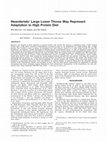
Humans are limited in their capacity to convert protein into energy. We present a hypothesis that... more Humans are limited in their capacity to convert protein into energy. We present a hypothesis that a " bell " shaped thorax and a wide pelvis evolved in Neandertals, at least in part, as an adaptation to a high protein diet. A high protein diet created a need to house an enlarged liver and urinary system in a wider lower trunk. To test the hypothesis, we applied a model developed to identify points of nutritional stress. A ratio of obligatory dietary fat to total animal fat and protein sourced calories is calculated based on various known and estimated parameters. Stress is identified when the obligatory dietary fat ratio is higher than fat content ratios in available prey. The model predicts that during glacial winters, when carbohydrates weren't available, 74%285% of Neandertals' caloric intake would have had to come from animal fat. Large animals contain around 50% fat calories, and their fat content is diminished during winter, so a significant stressful dietary fat deficit was identified by the model. This deficit could potentially be ameliorated by an increased capability to convert protein into energy. Given that high protein consumption is associated with larger liver and kidneys in animal models, it appears likely that the enlarged inferior section of the Neandertals thorax and possibly, in part, also his wide pelvis, represented an adaptation to provide encasement for those enlarged organs. Behavioral and evolutionary implications of the hypothesis are also discussed. Am J Phys Anthropol 000:000–000, 2016. V C 2016 Wiley Periodicals, Inc. Humans are limited in their capacity to convert protein into energy. Estimates for the upper limit of protein consumption range from 35% to 50% of the diet (Speth, 1989).We hypothesize that Neandertals' " bell " shaped thorax and possibly also wide pelvis represent, at least in part, adaptations to a high protein diet. It is generally accepted that Neandertals had a relatively voluminous thorax (Franciscus
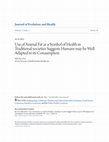
Abstract
Background and objectives: Recommendations to limit the dietary consumption of saturated... more Abstract
Background and objectives: Recommendations to limit the dietary consumption of saturated fat have been adopted by public health organizations in most countries. However, recent scientific studies and reviews have questioned the alleged negative health claims regarding saturated fat.
This research aims to provide a historical, evolutionary point of view to the debate through a short review of evidence for animal fat consumption by Paleolithic and recent traditional societies, and the discernment of how recent traditional societies perceived animal fat in terms of health and other lifestyle aspects.
Methodology: Literature review of the importance of animal fat's dietary consumption in prehistoric and recent traditional societies and scanning of ethnographic records for symbolic use of animal fat in rituals, linguistics and mythology. The contexts of such cultural expressions provide us with the peoples' perception of the analogues quality that animal fat imparts in its use as a symbol.
Results: Collection of 200 cases from culturally and geographically diverse traditional societies, reveals that in all three expression forms, there appears to be a clear tendency to associate animal fat with extremely positive meanings like "fertility", "sacredness", "wealth", "health", and even " a source of creation" and life itself.
Conclusion: In line with evidence for the importance of dietary animal fat in prehistoric and traditional societies, the studied traditional societies perceived animal fat as a vital component of their diet and a profound source of health rather than an impediment to health as it is presented in many dietary recommendations today.
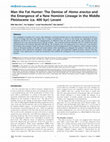
PloS one, Jan 1, 2011
The worldwide association of H. erectus with elephants is well documented and so is the preferenc... more The worldwide association of H. erectus with elephants is well documented and so is the preference of humans for fat as a source of energy. We show that rather than a matter of preference, H. erectus in the Levant was dependent on both elephants and fat for his survival. The disappearance of elephants from the Levant some 400 kyr ago coincides with the appearance of a new and innovative local cultural complex -the Levantine Acheulo-Yabrudian and, as is evident from teeth recently found in the Acheulo-Yabrudian 400-200 kyr site of Qesem Cave, the replacement of H. erectus by a new hominin. We employ a bio-energetic model to present a hypothesis that the disappearance of the elephants, which created a need to hunt an increased number of smaller and faster animals while maintaining an adequate fat content in the diet, was the evolutionary drive behind the emergence of the lighter, more agile, and cognitively capable hominins. Qesem Cave thus provides a rare opportunity to study the mechanisms that underlie the emergence of our post-erectus ancestors, the fat hunters. Citation: Ben-Dor M, Gopher A, Hershkovitz I, Barkai R (2011) Man the Fat Hunter: The Demise of Homo erectus and the Emergence of a New Hominin Lineage in the Middle Pleistocene (ca. 400 kyr) Levant. PLoS ONE 6(12): e28689.
Thesis Chapters by Miki Ben-Dor
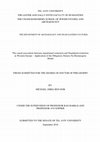
The reason for the extinction of the Neandertals in Western Europe, and especially the question o... more The reason for the extinction of the Neandertals in Western Europe, and especially the question of whether AMH played an active role in their demise, is one of the most controversial issues in prehistoric research.
This thesis aims to present and test a hypothesis that the megafaunal extinction that began some 50 Kya in Western Europe played a significant role in the extinction of the Neandertals.
A natural decrease in plant food availability during the long and harsh MIS 3 winters in Western Europe lead to the conclusion that Neandertals relied to a significant extent on animal-sourced food, especially during winters. A physiological ceiling on their protein consumption, coupled with the limited availability of plant food, must have forced Neandertals to depend on the acquisition and consumption of a substantial amount of animal fat. This obligatory amount of fat could only be supplied by acquiring large animals which contain, relatively, a higher proportion of calories from fat than smaller animals and even more so during harsh winters. When large animals diminished, a chronic energetic stress developed which could have caused the extinction of the Neandertals.

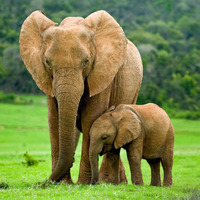


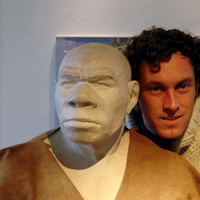
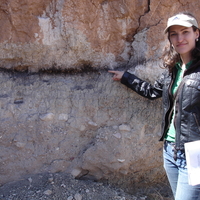





Uploads
Papers by Miki Ben-Dor
transformations that include the evolution of new physiological traits and the adoption, assimilation, and replacement of cultural and behavioral patterns. Some changes, such as brain expansion,
use of fire, developments in stone-tool technologies, or the scale of resource intensification, were uncharacteristically progressive. We previously hypothesized that humans specialized in acquiring large prey because of their higher foraging efficiency, high biomass density, higher fat content, and the use of less complex tools for their acquisition. Here, we argue that the need to mitigate the additional energetic cost of acquiring progressively smaller prey may have been an ecological selecting agent in fundamental adaptive modes demonstrated in the Paleolithic archaeological record.
We describe several potential associations between prey size decline and specific evolutionary and cultural changes that might have been driven by the need to adapt to increased energetic demands while hunting and processing smaller and smaller game.
There is little doubt that meat was a significant component of the Paleolithic diet and that it was acquired largely by hunting [1] and thus Paleolithic humans can be defined as carnivores.
The definition of carnivory, however, is vague as a dietary pattern. There are 'carnivores' belonging to the Carnivora family that doesn't eat meat (Panda bears). There are 'obligate carnivores' that rely on very high protein consumption (cats). There are hypercarnivores that by definition consume more than 70% of the calories from animal sources and there are even 'epic carnivores' at the very top of the food
chain (lions).
The purpose of the present investigation is not to assign humans to any of these categories but to find out whether during our evolution we became adapted to consume large quantities of meat on account of a previous adaptation to consume large quantities of plants. If so, we can assume that a relatively large quantity of meat will be safer than consuming a relatively large quantity of plant foods.
Another question that comes up is to what level of protein consumption we became adapted. Since in diet, every item that we consume replaces an item that we could consume, if we are adapted to consume animal sourced protein, we can consider it to be a safer food than other foods, like domesticated plants,
Background and objectives: Recommendations to limit the dietary consumption of saturated fat have been adopted by public health organizations in most countries. However, recent scientific studies and reviews have questioned the alleged negative health claims regarding saturated fat.
This research aims to provide a historical, evolutionary point of view to the debate through a short review of evidence for animal fat consumption by Paleolithic and recent traditional societies, and the discernment of how recent traditional societies perceived animal fat in terms of health and other lifestyle aspects.
Methodology: Literature review of the importance of animal fat's dietary consumption in prehistoric and recent traditional societies and scanning of ethnographic records for symbolic use of animal fat in rituals, linguistics and mythology. The contexts of such cultural expressions provide us with the peoples' perception of the analogues quality that animal fat imparts in its use as a symbol.
Results: Collection of 200 cases from culturally and geographically diverse traditional societies, reveals that in all three expression forms, there appears to be a clear tendency to associate animal fat with extremely positive meanings like "fertility", "sacredness", "wealth", "health", and even " a source of creation" and life itself.
Conclusion: In line with evidence for the importance of dietary animal fat in prehistoric and traditional societies, the studied traditional societies perceived animal fat as a vital component of their diet and a profound source of health rather than an impediment to health as it is presented in many dietary recommendations today.
Thesis Chapters by Miki Ben-Dor
This thesis aims to present and test a hypothesis that the megafaunal extinction that began some 50 Kya in Western Europe played a significant role in the extinction of the Neandertals.
A natural decrease in plant food availability during the long and harsh MIS 3 winters in Western Europe lead to the conclusion that Neandertals relied to a significant extent on animal-sourced food, especially during winters. A physiological ceiling on their protein consumption, coupled with the limited availability of plant food, must have forced Neandertals to depend on the acquisition and consumption of a substantial amount of animal fat. This obligatory amount of fat could only be supplied by acquiring large animals which contain, relatively, a higher proportion of calories from fat than smaller animals and even more so during harsh winters. When large animals diminished, a chronic energetic stress developed which could have caused the extinction of the Neandertals.
transformations that include the evolution of new physiological traits and the adoption, assimilation, and replacement of cultural and behavioral patterns. Some changes, such as brain expansion,
use of fire, developments in stone-tool technologies, or the scale of resource intensification, were uncharacteristically progressive. We previously hypothesized that humans specialized in acquiring large prey because of their higher foraging efficiency, high biomass density, higher fat content, and the use of less complex tools for their acquisition. Here, we argue that the need to mitigate the additional energetic cost of acquiring progressively smaller prey may have been an ecological selecting agent in fundamental adaptive modes demonstrated in the Paleolithic archaeological record.
We describe several potential associations between prey size decline and specific evolutionary and cultural changes that might have been driven by the need to adapt to increased energetic demands while hunting and processing smaller and smaller game.
There is little doubt that meat was a significant component of the Paleolithic diet and that it was acquired largely by hunting [1] and thus Paleolithic humans can be defined as carnivores.
The definition of carnivory, however, is vague as a dietary pattern. There are 'carnivores' belonging to the Carnivora family that doesn't eat meat (Panda bears). There are 'obligate carnivores' that rely on very high protein consumption (cats). There are hypercarnivores that by definition consume more than 70% of the calories from animal sources and there are even 'epic carnivores' at the very top of the food
chain (lions).
The purpose of the present investigation is not to assign humans to any of these categories but to find out whether during our evolution we became adapted to consume large quantities of meat on account of a previous adaptation to consume large quantities of plants. If so, we can assume that a relatively large quantity of meat will be safer than consuming a relatively large quantity of plant foods.
Another question that comes up is to what level of protein consumption we became adapted. Since in diet, every item that we consume replaces an item that we could consume, if we are adapted to consume animal sourced protein, we can consider it to be a safer food than other foods, like domesticated plants,
Background and objectives: Recommendations to limit the dietary consumption of saturated fat have been adopted by public health organizations in most countries. However, recent scientific studies and reviews have questioned the alleged negative health claims regarding saturated fat.
This research aims to provide a historical, evolutionary point of view to the debate through a short review of evidence for animal fat consumption by Paleolithic and recent traditional societies, and the discernment of how recent traditional societies perceived animal fat in terms of health and other lifestyle aspects.
Methodology: Literature review of the importance of animal fat's dietary consumption in prehistoric and recent traditional societies and scanning of ethnographic records for symbolic use of animal fat in rituals, linguistics and mythology. The contexts of such cultural expressions provide us with the peoples' perception of the analogues quality that animal fat imparts in its use as a symbol.
Results: Collection of 200 cases from culturally and geographically diverse traditional societies, reveals that in all three expression forms, there appears to be a clear tendency to associate animal fat with extremely positive meanings like "fertility", "sacredness", "wealth", "health", and even " a source of creation" and life itself.
Conclusion: In line with evidence for the importance of dietary animal fat in prehistoric and traditional societies, the studied traditional societies perceived animal fat as a vital component of their diet and a profound source of health rather than an impediment to health as it is presented in many dietary recommendations today.
This thesis aims to present and test a hypothesis that the megafaunal extinction that began some 50 Kya in Western Europe played a significant role in the extinction of the Neandertals.
A natural decrease in plant food availability during the long and harsh MIS 3 winters in Western Europe lead to the conclusion that Neandertals relied to a significant extent on animal-sourced food, especially during winters. A physiological ceiling on their protein consumption, coupled with the limited availability of plant food, must have forced Neandertals to depend on the acquisition and consumption of a substantial amount of animal fat. This obligatory amount of fat could only be supplied by acquiring large animals which contain, relatively, a higher proportion of calories from fat than smaller animals and even more so during harsh winters. When large animals diminished, a chronic energetic stress developed which could have caused the extinction of the Neandertals.